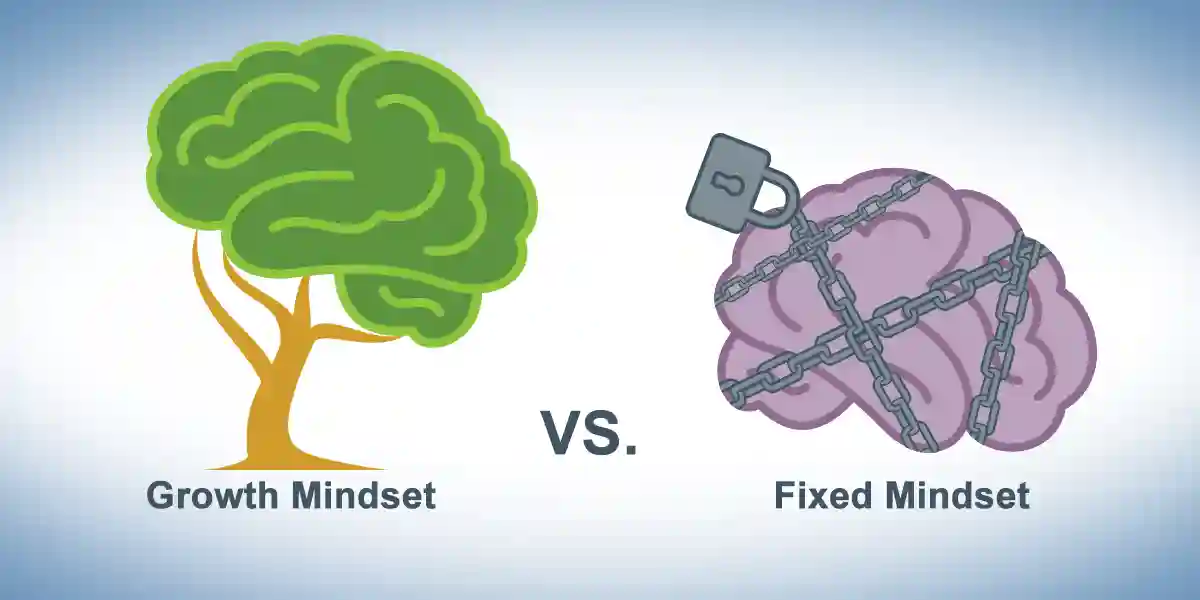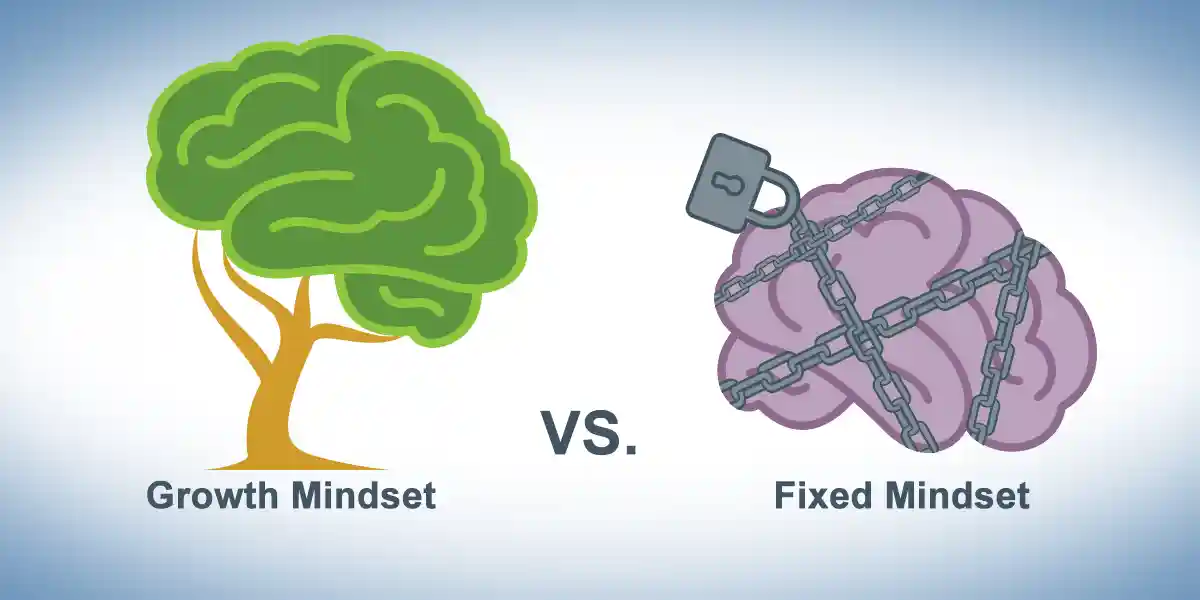by Evan Sinar, Ph.D.
Facing the relentless business pressures of digital transformation and disruptive automation companies—and the leaders on whose backs they thrive or fail—must rapidly advance and broaden their leadership capabilities to survive. The resulting sense of urgency, paired with ever-intensifying competitive forces, makes the search for evidence-based growth levers a crucial corporate imperative.
In this blog I’ll overview one such lever—applying a “growth mindset” to talent management. Through recent global research, we show how a talent growth mindset not only manifests itself in a distinctive set of leadership practices, but also links to a broad range of leadership, financial, and reputational outcomes.
How a growth mindset drives success in individuals
To understand the roots of a growth mindset’s promise for companies, it’s important to first step back to recognize its role in explaining the behaviors, and ultimately, the successes of, individuals. The concept of an individual’s personal growth mindset is a powerful and pervasive explanatory force behind dozens of outcomes—from students’ grades in school to the organizational commitment of employees.
Based on a multi-decade program of research originated by Stanford psychologist Carol Dweck, an individual’s growth mindset is best defined by comparing it with its opposite, a fixed mindset. Drawing on Dweck’s characterization in her 2007 book, Mindset…
“In a fixed mindset, people believe their basic qualities, like their intelligence or talent, are simply fixed traits. They spend their time documenting their intelligence or talent instead of developing them. They also believe that talent alone creates success—without effort.”
Contrast this with…
“In a growth mindset, people believe that their most basic abilities can be developed through dedication and hard work—brains and talent are just the starting point. This view creates a love of learning and a resilience that is essential for great accomplishment.”
Though this concept was originally conceived to describe an individual’s orientation to his or her own development, more recent research by Dweck and her colleagues expands the idea to an entire organization’s perspective: that is, how a company characterizes the growth potential of its workforce.
In collaboration with The Conference Board and EY, DDI recently completed one of the largest leadership research projects ever conducted, Global Leadership Forecast 2018. As one component of this research, we extended earlier work on the company growth mindset concept by identifying:
- Sources of variability in growth mindset across key company characteristics.
- Specific leadership practices that differentiate high growth mindset organizations.
- Business, talent, and reputational outcomes attained by high growth mindset companies.
We asked 1,794 HR professionals, spanning 54 countries and 26 major industry sectors, “In your organization is the perception that talent is developed over time or stable (i.e., talented people are just talented)?” We classified the resulting responses into high (developed over time), medium, and low (stable) growth mindset based on the degree to which organizations see talent as fluid and developable.
What company characteristics are linked to a stronger growth mindset?
We began with a diagnosis of company characteristics associated with growth mindset. Surprisingly, we found no differences by company size, industry, or public/private status. That is, growth mindset views were similar regardless of a company’s standing on these dimensions. However, we did find that growth mindset varied by country in which the respondent was based. Two countries—China (53 percent high growth mindset) and Thailand (53 percent)—were significantly more likely to see talent as inherently developed over time, whereas two other countries—Chile (31 percent high growth mindset) and the United States (32 percent)—were much more likely to see talent as stable, or a fixed mindset.
What do growth mindset companies uniquely do?
How does mindset, a relatively abstract way of thinking about talent at a company level, translate to actual practices in use with an organization’s leaders? We found seven distinctive practices in place at significantly higher rates, and stronger embeddedness, for high growth mindset companies:
- Clearly specify what leaders need to excel. Talent growth is impossible without precisely defined development targets: often behavior-based competency frameworks that underlie multiple talent systems, from hiring to performance management to succession.
- Make high-caliber “always-on” learning a reality. They offer leaders on-demand learning through a readily-accessible library or learning system.
- Sequence progressive, integrated learning. Leadership development modules are built and positioned within a planned sequence, rather than independent and disconnected instances.
- Craft learning experiences as opposed to just setting up learning events. They appoint a dedicated learning experience manager to design and orchestrate personalized, engaging learning.
- Track and constantly course-correct development progress. High-potential leaders' performance in developmental assignments is carefully monitored and evaluated.
- Put teeth and consequences behind expectations for growing others. Managers are held accountable for supporting high-value leaders within their divisions and departments.
- Meticulously plan leadership transitions. They use formal programs to ensure smooth transitions regardless of whether it’s into a first-time leader role or a C-suite corner office.
It’s crucial to know the mechanisms—the leader-focused practices above—through which companies are turning growth mindset aspirations into well-entrenched realities.
What do growth mindset companies uniquely achieve?
As a part of our research, we studied the outcomes that high growth mindset companies were achieving at significantly higher rates than their fixed mindset peers. Growth mindset companies outperformed those with a fixed mindset in their:
- Reputational distinction and excellence. They were much more likely to have been ranked on a global or national list reflecting workplace excellence (e.g., Best Company to Work For).
- Senior-level leadership quality. Their current roster of upper managers is notably stronger.
- Competitive aggressiveness and agility. Their leaders are better able to respond to the organization’s competitive environment.
- Customer orientation and focus. Their leaders more deeply understand and more adeptly act on changing customer needs and perspectives within their operating market.
- Success rate for expatriate leaders. When they place leaders on assignment in other countries, they succeed at significantly higher rates.
- Success rate for high-potential leaders. The leaders they designate as high potentials (a concept that many organizations are rethinking and broadening) succeed at much higher rates.
- And, perhaps most importantly to build the business case for growth-oriented talent practices, companies with a talent growth mindset were 50 percent more likely to outperform their peers on a profitable growth financial composite encompassing rate of aggressive growth in the past three years, three-year revenue change, profit margin, and return on equity.
High growth mindset companies are more likely to achieve high success rates for expatriate and high-potential leaders, to foster leadership capabilities that will overcome business challenges, and to be seen as an employer of choice through their standing on well-respected reputational rankings. And ultimately, a growth mindset about talent is closely paralleled by a much stronger history of profitable, rapid financial growth by the entire company.
The leadership practices above, identified by reverse-engineering the talent management strategies for high growth mindset companies, are firmly in place for these companies at much higher rates than for organizations viewing talent as stable and fixed. These are the linchpin actions needed to convert often-vague growth aspirations into a practical and research-grounded path to achieve those aspirations.
Disciplined action on these practices is the key for moving growth mindset from an ethereal and intangible concept to an integrated and sustainable strategy for high-potential management, leadership development, and business transformation.
Explore all the findings from Global Leadership Forecast 2018.
Evan Sinar, Ph.D. is the Chief Scientist and Vice President of the Center for Analytics and Behavioral Research (CABER). Evan is the lead researcher for the Global Leadership Forecast 2018 and is a frequent author and presenter on leadership assessment and development, HR analytics, data visualization, and workplace technology.
Topics covered in this blog

